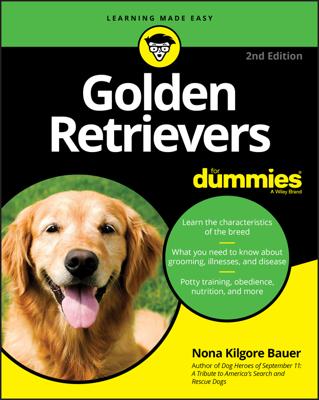The Labrador Retriever has a wash-and-wear coat, but that doesn't mean you don't need to regularly groom your dog. Regularly grooming your Labrador Retriever not only improves your bond with your animal, it also gives you the opportunity to spot problems before they get out of hand. A regular grooming routine will usually consist of
Inspecting: Begin each grooming session with a head to toe massage. Feel for any lumps, bumps, dry patches, hair loss, or anything else abnormal. Massaging a dog also helps to loosen dead hair and skin so that it can be brushed away.
Pick up each foot and wiggle each toe, feel the footpads, and then gently examine and rub each ear. Getting your Labrador Retriever used to having these tender areas touched will make it easier for your vet to treat him if he gets injured.
Brushing: A thorough brushing once a week with a natural or nylon bristle brush is all your Lab needs to stay clean. However daily brushing feels great to your Lab and keeps her immaculately clean. The brushing action stimulates the natural oils in the skin, which will keep her coat glistening.
Bathing: Labs don't need to be bathed too often. Bathe your Lab only when he gets really dirty. Frequent bathing can actually dry out their skin. (Thank goodness, because bathing a full grown lab can be a challenging experience.)
Try to give your Lab plenty of time to play outdoors every day. The outdoor air helps to keep their skin moist.
Cleaning the eyes: Check your Lab's eyes regularly for discharge or irritation. If they need it, clean by wiping with a cotton ball doused in saline.
You may notice staining around the eyes of a yellow Lab. This is completely natural and caused by the dog's tears. If it bothers you, you can remove the stains with a cotton ball soaked in hydrogen peroxide. However, be sure to put a drop of mineral oil in each eye first to shield it from the peroxide.
If you see discharge, irritation or a change in the general appearance of the eye, take her to the vet as soon as you can. She might have a serious eye problem.
Cleaning the ears: If your Lab's ears look dirty or waxy, you can clean the visible parts with a cotton ball or cotton swab dampened with ear cleaner.
If your dog is scratching or shaking her ears a lot and you can't see any reason, or if you notice redness or a bad smell, take your dog to the vet. She could have mites, or an infection that will need to be treated.
Clipping: One of the most important aspects of your daily grooming is keeping your dog's nails clipped. Long nails force the footpads apart and make it difficult for your dog to walk correctly. Your puppy will soon realize that it doesn't hurt—as long as you don't cut down too far. You can see the quick in the nails of light-colored Labs, but in black or chocolate Labs, you'll just have to guess.
If you clip nails frequently, the quick retracts out of the way. If you do clip the quick, you can use a styptic stick or even Chap Stick to help stop the bleeding.
Some Labs develop cysts between their toes. A topical antibiotic ointment may help. If not, your vet may need to lance the cyst. See you vet if you think the cyst has become infected.
Teeth: Brush your dog's teeth daily to keep her healthy all over. In fact, dental plaque can get into your dog's bloodstream and into her heart, causing heart disease. Use a soft toothbrush designed for dogs or children and doggie toothpaste. Just lift the dog's lips and gently brush the outer surface of the teeth.
If your Labrador Retriever already has a build-up of plaque, your vet can remove it. Your vet will probably have to anesthetize your dog, so that it's not too traumatic. But then you'll need to follow up with regular brushing.
Canned dog food is more likely to cause dental problems than dry dog food. The greater moisture content makes canned dog food stick to your Lab's teeth. Dry dog food is not only equally nutritious, but it cleans teeth and is more cost-effective.
Pest control: Apply a pest-control product if necessary. The vet can help you find the best product for your area, but the product you choose should cover ticks, fleas, and worms.

